Cancer screening – natural history, prediction and microsimulation
We will continue work on natural history modelling for cervical, breast and prostate cancer. Methods include HPC-intensive calibrations of simulation likelihoods using Bayesian methods and optimisation procedures for expensive or imprecise objective functions (Laure, Jauhiainen at AstraZenenca, Uncertainty Quantification with SeRC-Brain-IT). We will investigate a computational framework for storage and analysis of m icro-simulation experiments for calibration and prediction (Laure, Dowling).
Breast cancer
By contrasting screen detected cancers with interval cancers (detected between screens) we identify molecular and image markers of tumor aggressiveness and screening sensitivity. Prof. Czene (with eCPC/Humphreys) has driven this line of research in recent years . To concretely understand the biological mechanisms we need novel analytic cancer natural history models based on biological tumor growth [M4.5]. We have made substantial progress developing mixed effects estimation and simulation based algorithms for studying growth, spread and screening sensitivity. (standard cancer natural history models based on multi-state modeling are not flexible enough for assessment of individualised screening/prevention that rely on modern individualised risk/prognostic factors.) Future plans include extending these modelling approaches so that we can incorporate study designs of all of the large breast cancer (screening) cohorts at KI and studying cost-effectiveness of proposals of individualised screening programs for breast cancer [M4.4]. Up until recently, the big data/multicore setting has seemed out of reach for our models. It has been shown that a class of approximation methods, which we have previously published on, can be deployed for large-scale data sets (as updates to the algorithms can be written in terms of sufficient statistics written in a summation form which allows them to be easily parallelised). This enables integration of the image data with the tumour progression models to address important medical/societal research questions about individualised screening/treatment [M4.6, D4.3].
Prostate cancer
Socialstyrelsen recently concluded that there was insufficient evidence for organised prostate cancer screening. We are ideally placed to address this research deficit, having implemented and calibrated a Swedish natural history model. We will assess the cost-effectiveness of emerging cancer screening tests. New prostate cancer tests can also be used in combination with magnetic resonance imaging (MRI) to screen out men with low risk of prostate cancer and to improve the sensitivity for advanced prostate cancer. We will assess the cost-effectiveness of the MRI screening using inputs from the STHLM3-MRI sub-studies [M4.3, D4.5]. For storage and analysis of the simulation experiments, we will compare Hadoop/Spark with a columnar database (MonetDB) [M4.1]. We will extend MonetDB to allow for in-database statistics [M4.2, D4.1, D4.2]. We will simulate for the cost-effectiveness of these interventions using HPC resources.
Cervical cancer
We recently completed a microsimulation project with Harvard on the cost-effectiveness of cervical cancer screening in HPV unvaccinated populations in Sweden (paper submitted). We are now in the position to develop an in-house model for cervical cancer screening in HPV-vaccinated populations in Sweden. This will draw upon the expertise from the prostate cancer microsimulation together with experience and parameters from the Harvard model [M4.8, D4.6]. We have completed a prototype model for multiple HPV infections. The model will be used to plan cervical cancer screening in Sweden.




